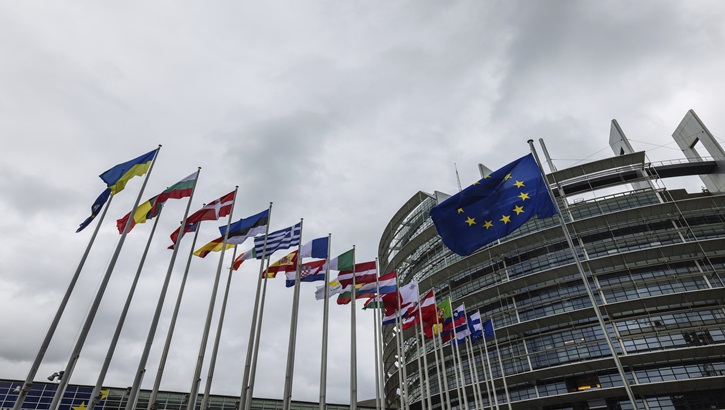
Investors continue to sell out of European assets into February, amid a tough backdrop of disappointing economic data, troubles in Germany, France and Italy, and Brexit uncertainty, Morningstar Direct data shows.
Europe’s heavy exposure to global trade dragged industrial production numbers down through the course of 2018, and European stock markets fell across the board during the year, with MSCI Europe down over 10%.
Year to date that has turned around and the index is up over 13%. December’s 0.9% fall in industrial production wa followed by a 1.4% increase in January, so things could be looking up.
But research firm Capital Economics notes that the quarter-on-quarter numbers show production is still contracting sharply. And investors seem to agree.
We previously highlighted flows out of European equity funds in late 2018. Now, that’s been extended to ETFs. Of the 10 Morningstar categories that saw the most outflows in February 2019, seven were related to European investments.
In equities, broad Eurozone large-cap ETFs have seen €1.2 billion of net outflows in the year-to-date. Funds tracking the Euro Stoxx 50 from both iShares, x-trackers, Lyxor and Amundi led the way. Sales of European mid-cap funds were weak, too. Net outflows of €456 million were worse than the category has seen before thanks to iShares MSCI Europe Mid Cap.
Elsewhere, country-specific funds focusing on blue-chip German and French companies saw net outflows of €623 million and €173 million respectively. These figures were the highest since May 2018 for German equities and June 2016 for French stocks.
German stocks had seen sentiment reverse in January, with €95 million in outflows during that month following seven consecutive months of inflows. “While news about the Eurozone has been disappointing, for Germany it has been dreadful,” says Andrew Kenningham, chief Europe economist at Capital Economics.
German industry is more exposed to global trade than most, with a high dependency on exporting industrial goods to China and cars to the US. It narrowly avoided joining Italy in a technical recession in 2018, while business confidence fell to a four-year low.
“With Chinese economic growth slowing and the US threatening to impose tariffs on European cars, steel and aluminium, German industry has faced strong headwinds,” explains Adrien Pichoud, chief economist at SYZ Asset Management.
Company-specific factors also hit the market, with fraud allegations at Wirecard and ongoing troubles at Deutsche Bank, which announced on Monday it was in merger talks with rival Commerzbank.
Difference in Views on European Fixed Income
In fixed income, European Government bonds saw a reversal in sentiment in February, with net outflows of €530 million. This followed four months of successive inflows with €4.25 billion pumped in between October 2018 and January 2019.
European sovereign bonds outperformed equities through 2018, with the Bloomberg Barclays Euro Government Index up 1.37% in the year – and investors piled in. However, with the European Central Bank joining the US Federal Reserve and becoming increasingly dovish, we may see stocks outperforming bonds in 2019.
There were bright spots in Europe, though. European corporate bonds saw inflows of over €1 billion in January. European high-yield bonds have been riding high, too. January’s net inflows of €650 million was the highest monthly number in three years.
Many, including Hermes’ Andrew Jackson and BlackRock’s Richard Turnill, note the attractiveness pf European high-yield debt versus US high-yield.
Pichoud adds: “The current environment of low interest rates, muted inflationary pressures and accommodative monetary policy is supportive for credit and risky assets overall.”
Andrea Iannelli, investment director at Fidelity International, strikes a slightly more cautious tone, though. He notes that the asset class will continue to remain at the mercy of political headlines, “with Italian woes back to the fore, the Brexit deadline fast approaching and European elections coming up in May”.
However, he contests: “Following the latest underperformance relative to other regional markets, European high-yield offers adequate compensation for the risks that still lie ahead. A neutral, rather than underweight, allocation is therefore appropriate.”




























